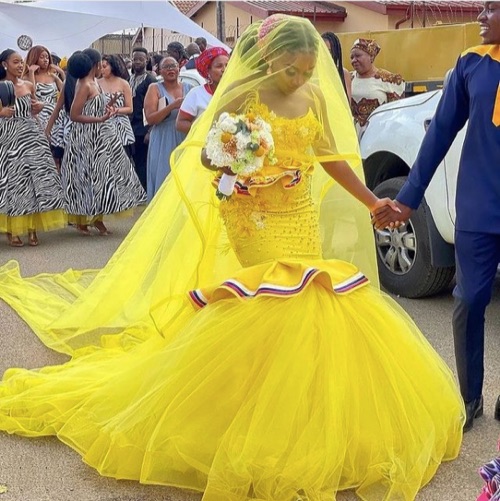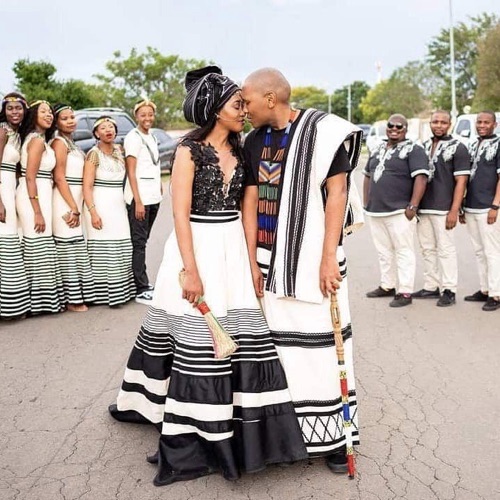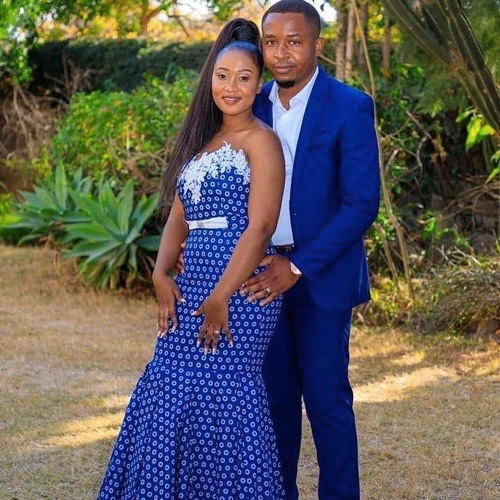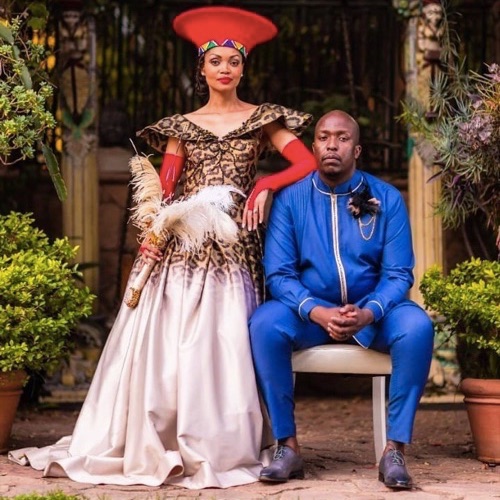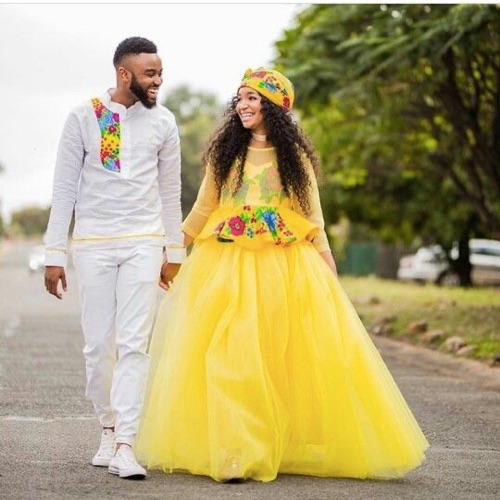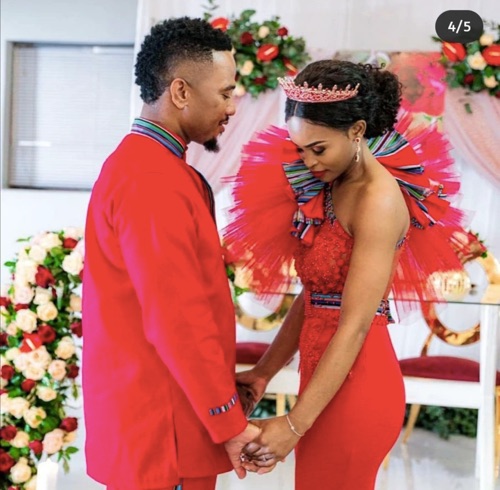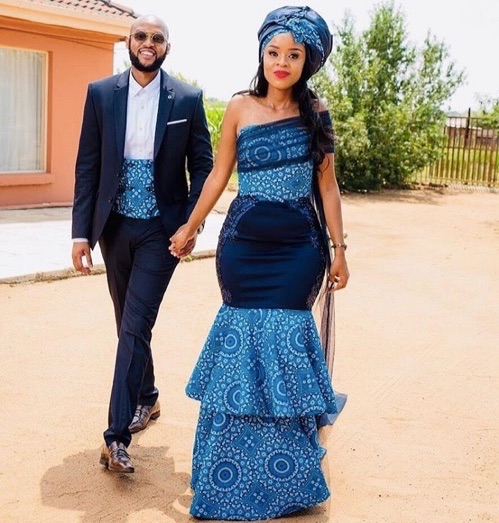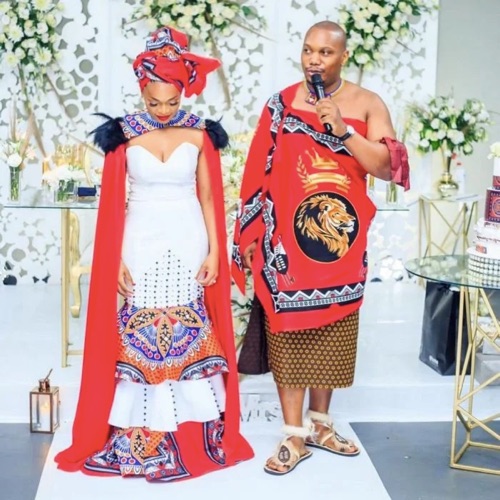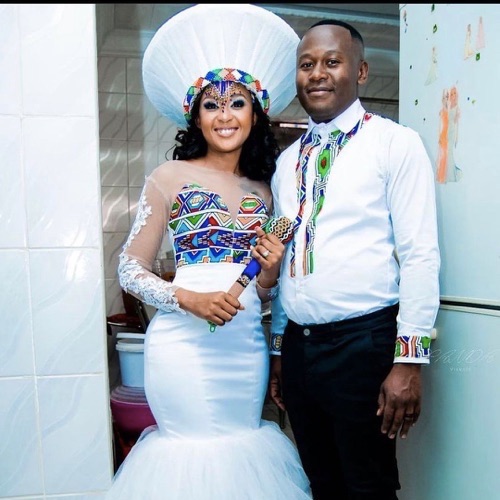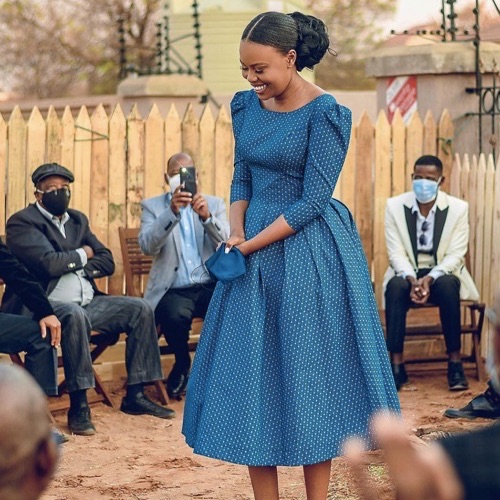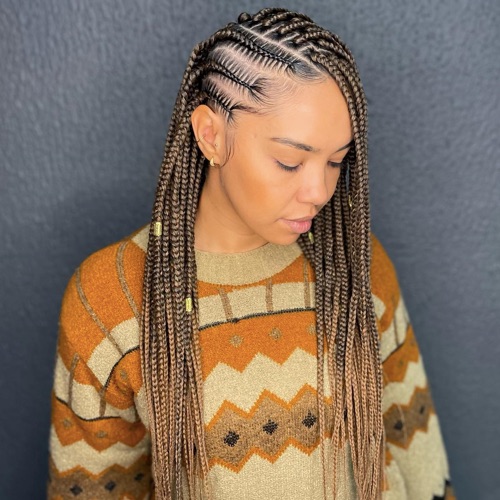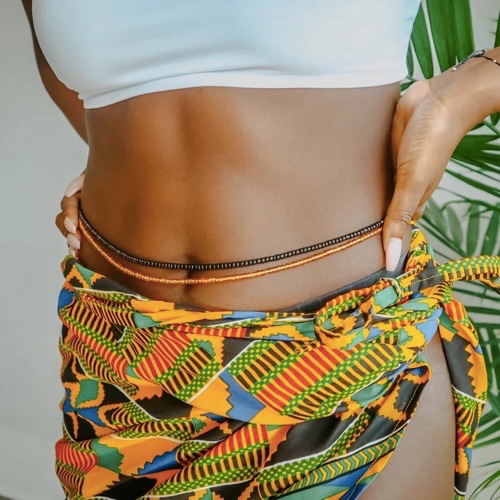Traditional wedding dresses are frequently embellished with intricate patterns and motifs that represent the people’s culture and customs. The wedding dresses in South Africa are some of the most colourful and vibrant in the world.
They’re also some of the most complicated, with intricate beadwork and multiple layers of fabric. While there are numerous distinct types of traditional African wedding gowns, they all have a number of similar characteristics. Explore dresses below👇🏾
Wedding Dresses by Culture
While the costumes vary from culture to culture, there are some basic elements that distinguish them. These dresses are typically very voluminous, with lengthy skirts and numerous layers.
They might be brightly coloured and adorned with beads, stones, or other adornments. Many have distinct headgear or crowns.
In contrast to the west, traditional bridesmaid dresses worn in South Africa are brightly coloured. They tend to be heavily adorned with intricate beading and sequins.
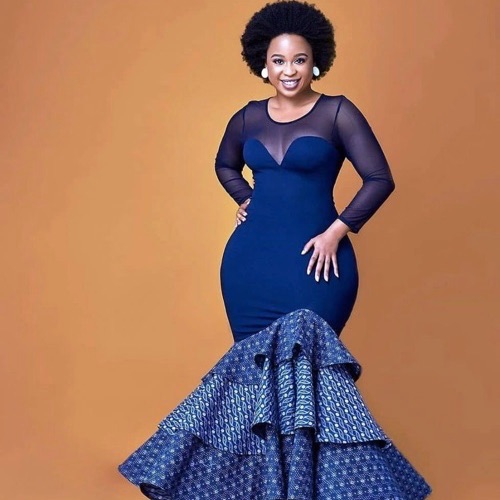
The influence of traditional African wedding dresses can now be felt all across the globe. This is commensurate with the grown in culturally authentic fashion
Cotton, Kente, Shweshwe, and silk are just a few of the most popular fabrics utilised in modern traditional wedding dresses. Many dresses also include bright colours and designs or intricate patterns and designs.
The overall effect is frequently very stunning and attention-grabbing. Traditional African wedding apparel is a colourful and vibrant refection of culture and artistry. There are many distinct types of traditional South African wedding dresses. Each has its own narrative about the bride’s community and roots.
The Shweshwe wedding dress is the most common type of traditional dress. Shweshwe is a diverse print that is frequently used to create eye-catching traditional weddings. Other well-known types of African wedding attire are the Kitenge dress, Dashiki suit, and Zulu traditional garb.
Types of Traditional Wedding Dresses
The first thing the bridal stylist will inquire about during your wedding dress fitting is the style or silhouette of wedding dress you’d want to wear.
Knowing how to describe your ideal gown may help you work with your designer more effectively. You might already have a vision for how you want your dress to look. This could flowing and comfortable or curve-hugging. But knowing exactly how on earth to explain it to your stylist can go a long way.
You can use the guide below to determine which style of wedding dress will best suit your tastes. This will include the very best wedding dresses for your body type.
Once you’ve determined on one or two dress forms to try on, we advise trying on one or two dresses that are the total opposite just to be safe!
Ball gown
This silhouette is perfect for anybody who has ever desired a fairytale moment of their own. One of the most popular wedding dress designs, ball gowns will instantly transform you into Cinderella on your wedding day.
A ball gown has a fitted upper torso (often with a corset) and a wide, full skirt achieved by using crinolines or tulle layers. Because the broad skirt slides over your lap, this style is ideal for brides who want to slim their waist, provide bust support, or create the impression of broader hips.
The ball gown is one of the most regal designs—the Duchess of Cambridge, Grace Kelly, Jackie O, and Princess Di have all worn ball gowns on their weddings.
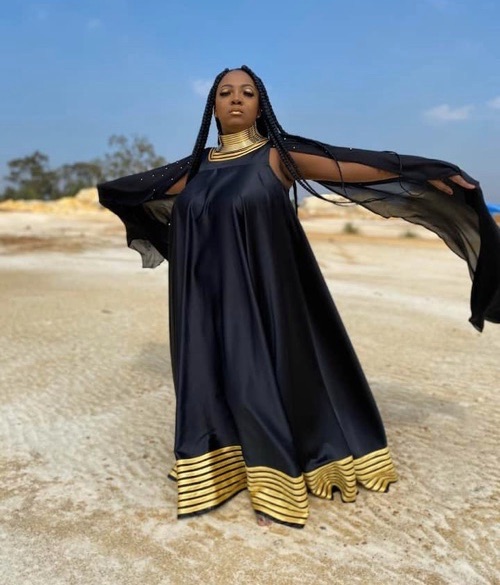
Trumpet Traditional Wedding Dress
The trumpet wedding dress form appears to be very similar to the mermaid silhouette, but there are a few minor differences.
Take note of where the skirt begins to flare out first and foremost. The trumpet shape is less fitted around the hips and gradually wider at the lower thigh, whereas the mermaid form does not flare until just above or at the knees.
When you wear a trumpet wedding gown, you’ll have more mobility while also conducting a stunning effect. This is another form that is great for creating or enhancing curves, regardless of your shape.
Mermaid Traditional Wedding Dresses
Because it is extremely tight across the bust, waist, and hips – almost like shapewear – the mermaid wedding dress shape is well-known for being one of the most flirty silhouettes. If you want Beyoncé-worthy curves for your wedding day, no other style will do!
A mermaid dress will complement whatever your mother gave you. Or it may create the appearance of an hourglass figure if you’re naturally slender.
This eye-catching design flares out at the knees and is frequently worn with tulle, ruching, or ruffled skirts for a dramatic effect.
The mermaid traditional wedding dress is one of the more restrictive wedding dress forms. This is because your legs won’t be able to move as freely, but it’s certain to make you look lovely on the red carpet.
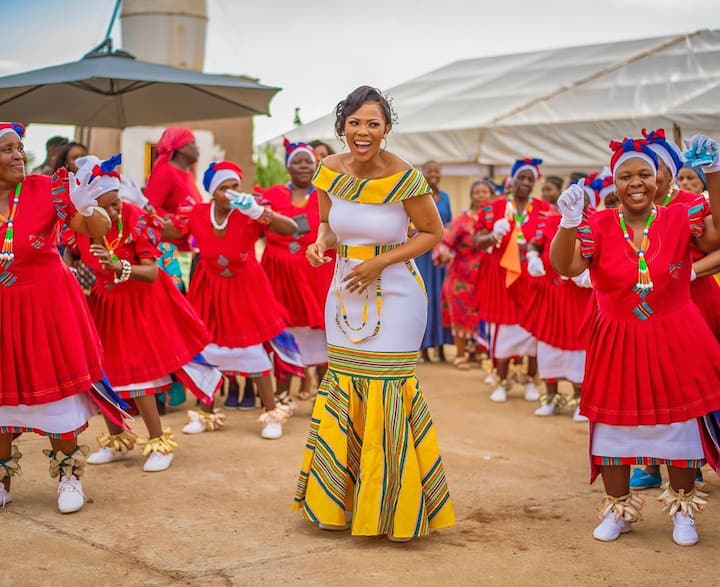
Sheath Dress
A sheath wedding gown is cut straight to the floor below your hips, with only a tiny flare. The V-neckline is a classic style that would go well with any wedding theme.
The fitted bodice and modest skirt are easy to slip into at the start of your ceremony, allowing you to move freely during the rest of it!
Sheath traditional dresses with long trains are frequently made without them, as they lack volume. The sheath silhouette’s lack of bulk is offset by its versatility. It looks great with virtually any fabric, from beaded fabrics to lace, satin, and stretch crepe.
Sheath wedding dresses are a beautiful choice for hourglasses, as well as petite brides who don’t want their gowns to overwhelm them.
Fit-and-Flare Dresses
A fit-and-flare wedding dress is a good compromise for brides who want to flaunt their figure without going all out with the dramatic mermaid or trumpet silhouettes.
This toned-down version still hugs your frame through the bust and waist, while being a bit more forgiving in the hips, bottom, and thighs.
The flowing skirt expands midway up the thigh, allowing you complete mobility while walking, sitting, and dancing. Because they are flattering on a variety of body types, fit-and-flare gowns are among the most popular wedding dress forms. This form looks stunning when complemented by a sweetheart or a deep V-neckline.
A-line Traditional Wedding Dresses
Consider the A-line as a halfway point between sheath and ball gown styles. An A-line skirt, which is named for its resemblance to an “A” form on the body, flares out from the waist more than you’d expect on a sheath dress, but not quite as much as a ball gown.
The universally flattering form is appropriate for all body types and wedding styles. Whether you’re bohemian, traditional, beachy, or somewhere in between. A-line traditional wedding dresses are frequently composed of organza, lace, or tulle. They may also be made of structured textiles like Mikado silk.
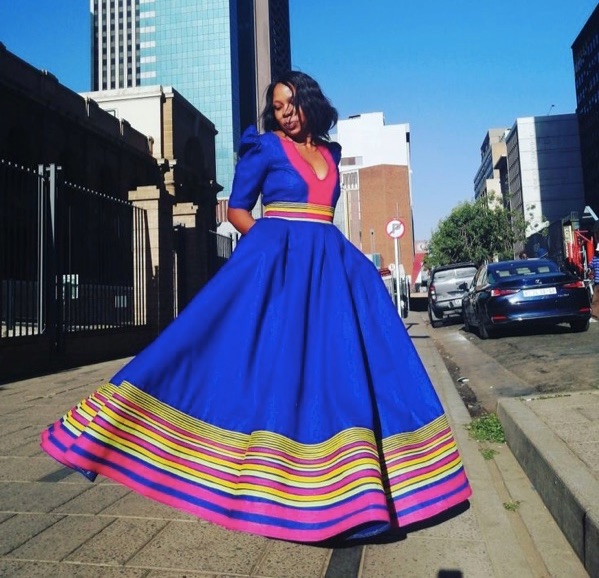
Column Wedding Dress
The V-shaped wedding dress form is similar to the sheath, but the bottom opening is narrower and more structured. Column wedding gowns can be fitted or loose at the waist and fall straight to the floor without any flare, resulting in a straight up-and-down appearance (hence the name!).
These are the ideal wedding gowns for petite brides since they offer less fabric without being too modest. They’re generally made from sturdier, thicker materials such as silk charmeuse, crepe, or beaded satin.
Whatever wedding dress form you select, it should make you feel confident, attractive, and comfortable—not worry about being fashionable or selecting the form that’s “correct” for your body type.
You may end up with a different gown than the one you had imagined or what you thought you would like, and that’s completely fine!
When it comes to purchasing your wedding dress, the greatest approach is to know enough of the fundamentals to understand what you’re searching for, while keeping an open mind.
Tea-length Wedding Dress
Midi dresses and tea-length gowns are popular choices for pre-wedding parties, such as engagement gatherings and bridal showers, but they may also be worn on your actual wedding day.
A wedding dress’s length is longer than that of cocktail and mini dresses – the skirt ends just below the knee, about six inches above the ankles. Shorter hemlines have long been popular for elopements and civil weddings because they’re easier to transport.
Tea-length wedding dresses are vintage and fun, and they flatter all shapes and sizes of brides. (Plus, everyone will be able to see your wonderful wedding heels, which would otherwise be hidden in a longer gown).

